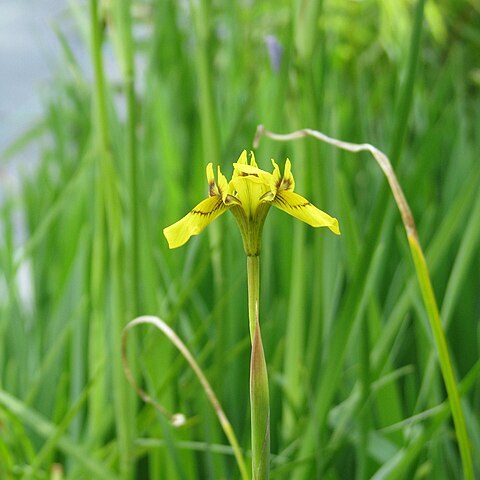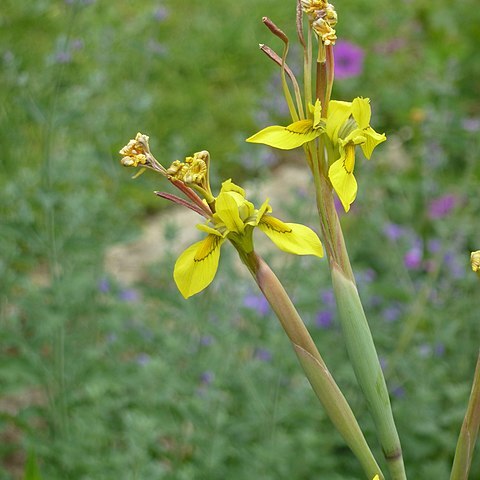Perennial herb, geophyte, 0.45-1.00 m high, in clumps; corm tunics membranous, covered by cataphylls; stem erect, usually simple. Leaf 1, linear, ± flat or canaliculate. Spathes herbaceous, apex dry. Inflorescence with yellow flowers; nectar guides deep yellow; style crests with brown to purple blotch; tepals (ob)lanceolate, outer up to 55 mm long, spreading, inner 45 mm long, erect. Stamens: filaments up to 13 mm long, united in lower half; anthers 7-9 mm long; pollen yellow. Ovary up to 15 mm long, cylindric; style branches ± 15 mm long; crests 10-13 mm long. Flowering time Sept.-Dec.
Cormous geophyte, up to 1 m high; cataphylls of mature plants brown to black, entire or irregularly broken, but not forming rigid vertical bristles. Leaves long, strap-like. Flowers: style crests marked with a single, dark brown to purple blotch at base; perianth with inner segments erect, bright yellow with deeper yellow nectar guides on outer segments; Oct.-Dec.
Cormous herb, up to 1 m high. Style crests marked with a single, dark brown to purple blotch at base. Inner tepals erect. Leaf long, strap-like. Flowers yellow with deeper yellow nectar guides on outer tepals.



